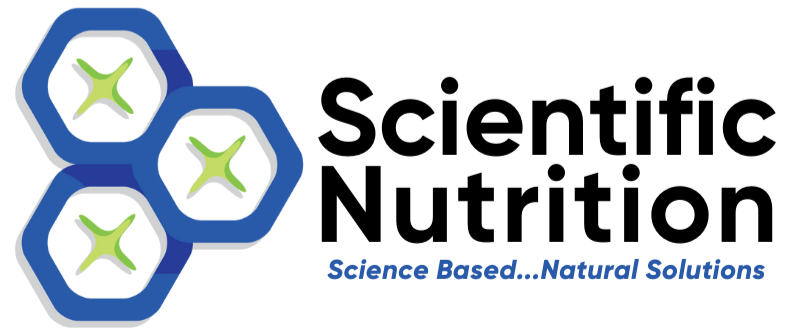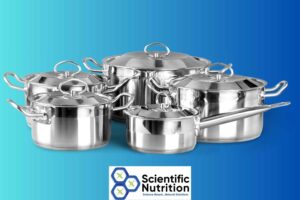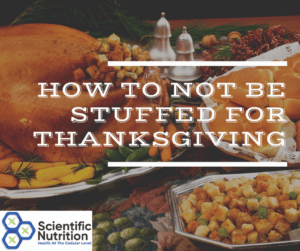Hidden Sources of Heavy Metals in Your Everyday Diet
Are toxic heavy metals hiding in your favorite foods? Learn the alarming truth about heavy metal contamination in everyday meals and learn effective ways to protect your family’s health.
As I pushed my cart through the grocery store last week, I couldn’t help but think about a disturbing conversation I’d had with my clients. They mentioned that some of their favorite foods may contain dangerous levels of heavy metals. Foods they had been eating their entire life, and feeding to their family. I immediately went home and did some deeper research, and what I discovered was eye-opening.
Today, I’m sharing what I learned about these hidden toxins that might be making their way onto your dinner table.
Heavy Metal Detox of Foods vs. Heavy Metal Sources: What You Need to Know
Heavy metals like lead, arsenic, cadmium, and mercury occur naturally in our environment, but industrial activities have dramatically increased their presence in our soil, water, and air. Unlike other contaminants, heavy metals don’t break down over time and can accumulate in the body, potentially leading to serious health concerns. These include cognitive impairment, kidney damage, and even cancer with long-term exposure.
What shocked me most was discovering that many of these toxins are hiding in plain sight, in foods we consume regularly.
Let’s explore ten common culprits.
Rice and Arsenic Toxicity: The Hidden Poison in Your Dinner
Rice is a dietary cornerstone for half the world’s population, but it’s particularly efficient at absorbing arsenic from soil and irrigation water. Brown rice, often touted as the healthier option, contains more arsenic than white rice because the compound concentrates in the grain’s outer layers, where the fiber is.
I remember preparing rice for my family’s stir-fry nights or with chicken, never suspecting that this simple grain could harbor potentially harmful levels of arsenic. The FDA has found that some rice products contain inorganic arsenic levels that warrant concern, especially for children and pregnant women.
How to Remove Arsenic from Rice: Essential Detoxification Methods
Rinse rice thoroughly before cooking and use a 6:1 water-to-rice ratio, draining the excess water after cooking. This method can reduce arsenic content by up to 60%! Also, you can soak it for a while before rinsing. Consider diversifying your grains by incorporating quinoa, barley, or farro into your diet.
Mercury in Seafood: The Silent Neurotoxin in Your Fish Dinner
My weekly tuna sandwich habit came to an abrupt halt when I learned about mercury levels in certain seafood. Large predatory fish like tuna, swordfish, king mackerel, and shark accumulate mercury through their diet in a process called biomagnification.
Mercury is particularly concerning because it can cross the blood-brain barrier and the placenta, potentially affecting neurological development. The EPA and FDA have issued guidelines specifically for pregnant women, nursing mothers, and young children to limit consumption of high-mercury fish.
Low Mercury Fish Options: Safer Seafood Choices for Your Family
Opt for smaller fish like a rare meal of wild-caught salmon, tri-weekly sardines, and fresh-caught local trout, which generally contain lower mercury levels. When choosing tuna, light skipjack has lower mercury content than albacore or yellowfin. The American Heart Association still recommends eating fish twice weekly for heart health, just be selective about which species you consume.
Rice Protein Products: The Concentrated Source of Heavy Metals
Another revelation in my heavy metal research journey was discovering that rice protein products, including rice protein powder and rice-based protein bars, can contain even higher concentrations of arsenic than plain rice. These products have gained popularity in the health and fitness community, particularly among those following plant-based, vegan, or gluten-free diets.
Rice protein is created by processing rice to isolate its protein content, but unfortunately, this process doesn’t eliminate the arsenic. In fact, it can concentrate its levels. Consumer Reports testing found concerning levels of arsenic in many rice-based protein supplements, with some containing significantly more than the FDA’s proposed limits for arsenic in infant rice cereal.
I was shocked when I realized the protein powder I’d been adding to my post-workout routine might actually be undoing some of the health benefits I was working so hard to achieve.
Choosing Safer Protein Alternatives: Protecting Your Fitness Goals
If you’re using protein supplements, consider switching to pea protein, hemp protein, or whey protein (if you consume dairy), which typically contain lower levels of heavy metals than rice-based options. Always research brands that conduct regular testing for contaminants and publicly share their results.
For those who prefer whole food protein sources, legumes like lentils and chickpeas offer excellent plant-based protein with typically lower heavy metal profiles than rice protein products.
Lead and Cadmium in Dark Chocolate: Hidden Toxins in Your Healthy Treat
This discovery broke my chocolate-loving heart. Recent studies have found concerning levels of lead and cadmium in many dark chocolate products, including my favorite 70% Lendt brand. Because cacao plants readily absorb these metals from soil, they can end up concentrated in chocolate, particularly varieties with higher cacao percentages. Another factor is cheap grinding plates that shed metals into the cocoa bean as it is ground.
Cadmium accumulates in the kidneys and can cause damage with long-term exposure, while lead is particularly dangerous for children’s developing brains and nervous systems.
Safe Chocolate Consumption: Minimizing Heavy Metal Exposure
Don’t abandon chocolate entirely, but consider moderating consumption of dark chocolate with very high cacao percentages (85 %+). Do your research for the healthiest dark chocolate brands!
Milk chocolate typically contains lower levels of heavy metals but comes with more sugar. Look for chocolates sourced from regions with lower soil contamination levels, such as South America, rather than West Africa.
Protein Powder Heavy Metal Contamination: The Fitness Enthusiast’s Risk
While researching nutritional supplements, I was alarmed to discover that many protein powders, not just rice-based varieties, contain measurable levels of heavy metals. A Clean Label Project study tested 134 protein products and found many contained detectable levels of lead, cadmium, mercury, and arsenic!
Plant-based protein powders were particularly concerning, with some containing up to twice the amount of heavy metals as whey-based options. The manufacturing process, sourcing of ingredients, and the natural ability of certain plants to absorb environmental contaminants all contribute to this hidden health risk.
As someone who substitutes protein supplements at times for my fitness routine, this discovery made me completely reevaluate my supplement choices.
Safer Protein Supplementation: Minimizing Heavy Metal Foods and Exposure
When choosing protein supplements, look for companies that conduct and publish regular testing for heavy metals. Third-party certification from organizations like NSF Certified for Sport or Informed Choice provides additional assurance.
Whey protein isolate typically contains lower levels of contaminants than plant-based options, though this isn’t helpful for vegans or those with dairy sensitivities. If you prefer plant proteins, pea protein generally tests lower in heavy metals than rice or hemp varieties.
Consider cycling between different protein sources rather than consuming the same product daily, which helps prevent the potential accumulation of specific contaminants.
Leafy Green Heavy Metal Content: The Clean Eating Paradox
The irony wasn’t lost on me that some of the foods we eat to detoxify our bodies might actually introduce toxins. Leafy greens like spinach and kale, nutritional powerhouses we’re encouraged to consume daily, can absorb lead and other heavy metals from contaminated soil.
These vegetables have large leaf surfaces and efficient root systems that can take up metals present in soil or water. While the nutritional benefits of leafy greens generally outweigh the risks, it’s worth being aware of their potential as heavy metal sources.
Detoxifying Leafy Greens: Reducing Lead and Cadmium Contamination
Wash leafy greens thoroughly under running water, removing outer leaves when possible. Consider growing your own in controlled soil or purchasing from farmers who test their soil for contamination. This includes sprays such as Roundup with glyphosate and other pesticides or herbicides. Organic AND non-GMO is best, local growers with both, even better! Rotate your greens rather than eating the same type daily to avoid potentially accumulating specific contaminants.
Arsenic and Lead in Fruit Juices: Why Children’s Drinks May Be Toxic
When my daughter asked for apple juice in her lunchbox, I hesitated because I knew that fruit juices, particularly apple, grape, and pear, have been found to contain concerning levels of arsenic and lead. A Consumer Reports investigation found that almost half of the tested juices had concerning levels of heavy metals, so it was rare that she even got organic juice.
The concentration process in juice production can increase heavy metal content, and children are particularly vulnerable to their effects due to smaller body size and developing organs.
Safer Juice Options: Protecting Children from Heavy Metal Exposure
At least limit juice consumption considerably for children according to American Academy of Pediatrics guidelines: no juice before age 1, maximum 4 ounces daily for ages 1-3, and no more than 6 ounces daily for ages 4-6. When possible, choose whole fruits over juices and look for products specifically tested for heavy metals.
Root Vegetables and Heavy Metal Absorption: The Soil Connection
Root vegetables like carrots, potatoes, and sweet potatoes are kitchen staples in countless households, but they harbor a concerning secret. These underground growers are particularly efficient at absorbing heavy metals from soil due to their direct and prolonged contact with potentially contaminated earth.
Lead, cadmium, and arsenic are the primary concerns with root vegetables. Industrial runoff, contaminated irrigation water, and phosphate fertilizers can all increase the concentration of these dangerous metals in agricultural soils, where they’re readily taken up by root systems.
What surprised me most a few decades ago was learning that conventional farming methods might actually increase the problem. A study published in the Journal of Environmental Science and Health found that certain conventional farming practices contributed to higher heavy metal uptake in root vegetables compared to organic farming methods.
Root Vegetable Safety: Peeling Away the Toxins
The good news is that simple preparation techniques can significantly reduce your exposure. Always peel root vegetables thoroughly, as the highest concentration of heavy metals often accumulates in or just below the skin (unfortunate for potato lovers). Scrubbing under running water before peeling provides an additional layer of protection.
Consider growing your own root vegetables in controlled soil or purchasing from farmers who test for soil contamination. If growing your own, avoid planting root vegetables in urban gardens near old buildings where lead paint may have contaminated the soil. Find organically sourced black dirt that was not farmed with pesticides. Some that are near clean swamps are excellent with essential microbes and nutrients.
Heavy Metals in Baby Food: Starting Life With Toxic Exposure
Perhaps most alarming on my journey was discovering the prevalence of heavy metals in commercial baby foods and infant cereals. A 2021 congressional report revealed that many leading baby food manufacturers knowingly sold products with dangerous levels of arsenic, lead, cadmium, and mercury! This lit my fire.
Rice-based baby cereals are particularly problematic due to rice’s natural tendency to absorb arsenic. The developing brains and bodies of infants are especially vulnerable to these neurotoxins, with exposure potentially leading to reduced IQ, attention disorders, and behavioral problems.
When my bestie was preparing to start solids with her son, I shared this information with her immediately. We were both shocked that products specifically marketed for vulnerable infants could contain such harmful substances.
Safe First Foods: Protecting Your Baby from Heavy Metal Foods and Toxicity
If you’re feeding an infant, consider making your own baby food using fresh, properly cleaned fruits and vegetables. When purchasing commercial products, look for brands that conduct rigorous testing for heavy metals (not Gerber or Beechnut) and publicly share their results.
Rice-free options like oatmeal or multigrain cereals typically contain lower levels of arsenic. For added protection, introduce a variety of first foods rather than relying heavily on one type of grain or vegetable, which helps prevent the accumulation of specific contaminants.
Bone Broth Heavy Metal Content: Health Tonic or Toxic Soup?
Bone broth has enjoyed tremendous popularity in recent years as a gut-healing, immune-boosting elixir. However, my research revealed a concerning downside: animals can store heavy metals in their bones, which then leach into the broth during the long simmering process.
Lead is the primary concern with bone broth, as this toxic metal has a strong affinity for bone tissue. A study in the journal Medical Hypotheses found that commercial chicken bone broth had detectable levels of lead, with concentrations increasing the longer the bones were simmered.
I was disappointed to discover this risk in what I had considered a healing food. The very process that extracts beneficial minerals and collagen from bones, long, slow cooking with acidic ingredients, also creates ideal conditions for extracting lead and other heavy metals.
Making Safer Bone Broth: Reducing Heavy Metal Food Contamination
If you enjoy bone broth, source bones from animals raised in controlled environments with minimal environmental exposure. Pasture-raised, organic animals generally have lower heavy metal loads than conventionally raised livestock. Make your own with organic, no antibiotics ever, no steroid hens.
Consider reducing cooking time (though this may extract fewer nutrients) or using meat instead of bones for stock. Adding plenty of fresh herbs and garlic to your broth may help chelate some heavy metals during the cooking process, too.
Alternating bone broth with vegetable broths provides nutritional benefits without the potential heavy metal risks of animal bones.
Seaweed Products: Ocean Pollutants in Your Health Foods
Seaweed has gained popularity as a superfood rich in minerals and antioxidants. However, as ocean pollution increases, so does the heavy metal content in marine plants. Seaweeds like hijiki, kombu, and nori can contain concerning levels of arsenic, cadmium, and lead.
Hijiki seaweed is particularly concerning, with arsenic levels so high that food safety authorities in several countries have issued warnings against its consumption. Yet it continues to be sold in health food stores and Asian markets worldwide.
Finding this out was particularly disappointing for me since I’d been regularly adding seaweed to soups and bits to salads as a mineral boost, never suspecting I might be introducing heavy metals into my diet.
Safer Seaweed Consumption: Navigating Ocean Pollution
If you enjoy seaweed, be selective about varieties and sources. Nori generally contains lower levels of heavy metals than hijiki or kombu. Look for seaweed harvested from cleaner waters, particularly those tested for contaminants. I like Maine Coast Sea Vegetables’ wild kelp from the Atlantic.
Consider limiting seaweed consumption to once or twice weekly rather than daily. Pregnant women and children should be particularly cautious about regular seaweed consumption due to potential arsenic and iodine concerns.
Hair Analysis and a Heavy Metal Foods Detox Diet: Essential Tips for Everyday Protection
Learning about heavy metals in foods I’d always considered healthy left me feeling frustrated and concerned. But rather than becoming paralyzed by fear, I’ve adopted a practical approach to minimizing exposure while maintaining a nutritious diet and detox protocols.
The key is variation, rotating foods rather than consuming the same items daily helps prevent the accumulation of specific contaminants. Supporting agricultural practices that minimize environmental contamination also makes a difference for collective health.
Remember that our bodies have natural detoxification systems, primarily the liver and kidneys. Supporting these organs with adequate hydration and a diverse diet rich in antioxidants can help mitigate some exposure effects.




